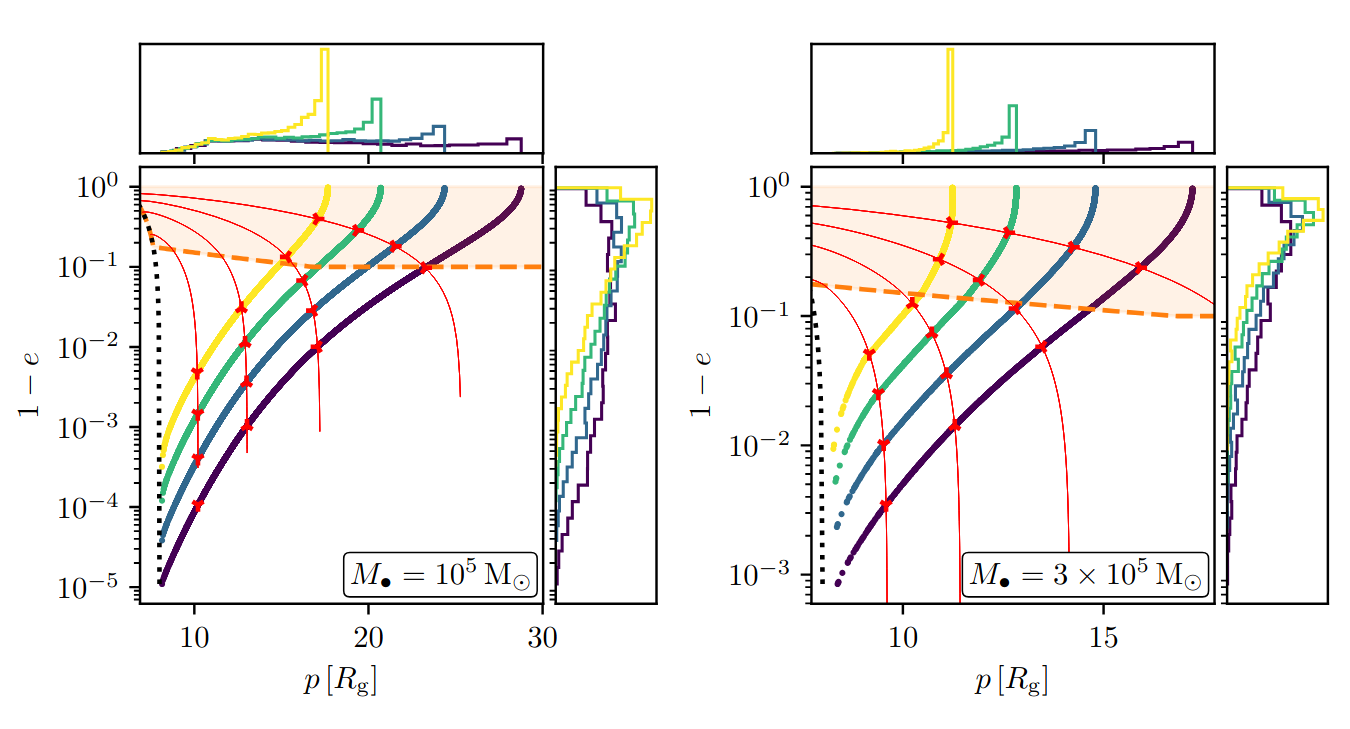I am an astrophysicist. Currently a Postdoctoral Researcher at Università degli Studi di Milano-Bicocca, in the group of prof. Alberto Sesana.
Recent Posts
Eccentricity distribution of extreme mass ratio inspirals
D. Mancieri, L. Broggi, M. Vinciguerra, A. Sesana, and M. Bonetti
We present realistic eccentricity distributions for extreme mass ratio inspirals (EMRIs) forming via the two-body relaxation channel in nuclear star clusters, tracking their evolution up to the final plunge onto the central Schwarzschild massive black hole (MBH). We find that EMRIs can retain significant eccentricities at plunge, with a distribution peaking at \(e_\mathrm{pl}≈0.2\), and a considerable fraction reaching much higher values.
read moreUpdated predictions for gravitational wave emission from TDEs for next generation observatories
M. Toscani, L. Broggi, A. Sesana, and E. M. Rossi
In this paper, we investigate the gravitational wave (GW) emission from stars tidally disrupted by black holes (TDEs), using a semi- analytical approach. Contrary to previous works where this signal is modeled as a monochromatic burst, we here take into account all its harmonic components. On top of this, we also extend the analysis to a population of repeated-partial TDEs, where the star undergoes multiple passages around the black hole before complete disruption.
read moreBreaking boundaries: extending the orbit averaged Fokker-Planck equation inside the loss cone
Broggi, Luca
In this Letter, we present a new formulation of loss cone theory as a reaction-diffusion system, which accounts for loss cone events through a sink term and can be orbit-averaged. It can recover the standard approach based on boundary conditions, and is derived from a simple physical model that overcomes many of the classical theoretical constraints. We test our formulation by computing the relaxed distribution of disruptive orbits in phase space, that has a simple analytic form and agrees with the pericentre of tidal disruption events at disruption predicted by non-averaged models.
read moreHanging on the cliff: EMRI formation with local two-body relaxation and post-Newtonian dynamics
Mancieri, Davide; Broggi, Luca; Bonetti, Matteo; Sesana, Alberto
Extreme mass ratio inspirals (EMRIs) are anticipated to be primary gravitational wave sources for the Laser Interferometer Space Antenna (LISA). They form in dense nuclear clusters, when a compact object is captured by the central massive black holes (MBHs) as a consequence of the frequent two-body interactions occurring between orbiting objects. The physics of this process is complex and requires detailed statistical modeling of a multi-body relativistic system.
read moreRepeating partial disruptions and two-body relaxation
Broggi, Luca; Stone, Nicholas C.; Ryu, Taeho; Bortolas, Elisa; Dotti, Massimo; Bonetti, Matteo; Sesana, Alberto
Two-body relaxation may drive stars onto near-radial orbits around a massive black hole, resulting in a tidal disruption event (TDE). In some circumstances, stars are unlikely to undergo a single terminal disruption, but rather to have a sequence of many grazing encounters with the black hole. It has long been unclear what is the physical outcome of this sequence: each of these encounters can only liberate a small amount of stellar mass, but may significantly alter the orbit of the star.
read more



